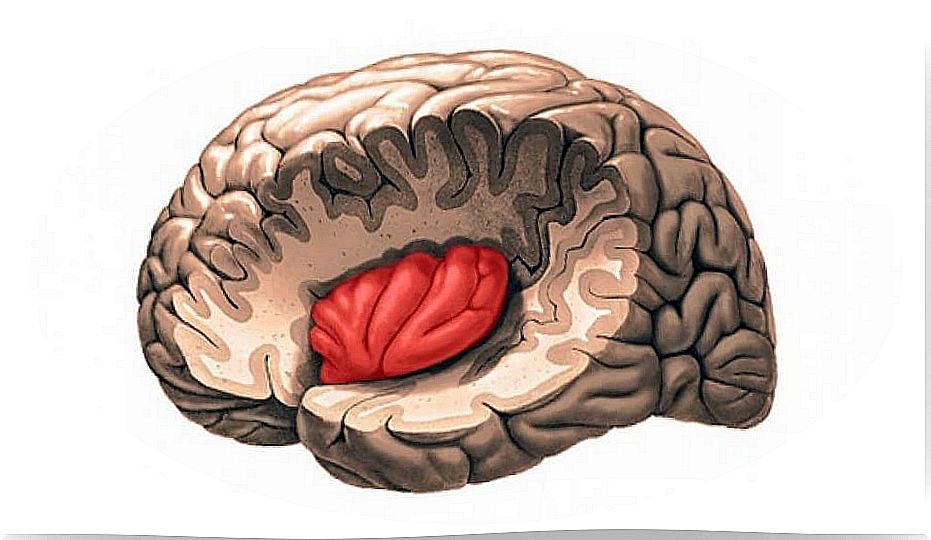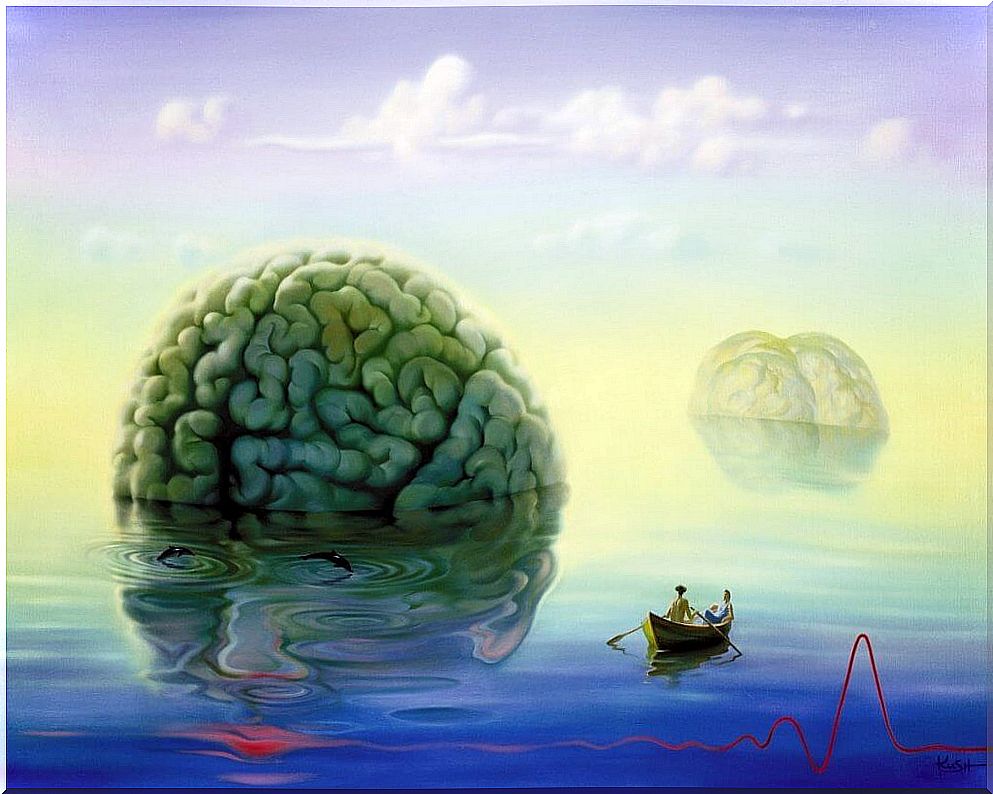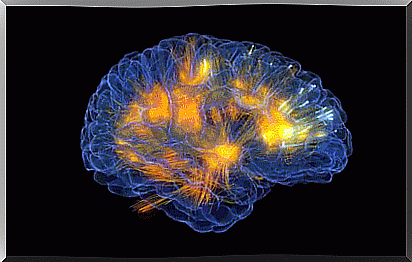The Insula, The Source Of Our Emotions And Empathy

The insula is a brain region as unknown as it is crucial to understanding our behavior. Some say that this is where the core of our “consciousness” is located. For now, neurologists only tell us that this structure works more like the source of our emotions, the seat of our empathy and the chest of our intuition.
Neuroscience is undoubtedly a fascinating discipline that never ceases to amaze us. A few years ago it was discovered, for example, that there were people who were able to quit smoking overnight completely naturally and without experiencing any withdrawal symptoms. The reason? When they had an MRI it was discovered that they had a small lesion on the brain insula.
Likewise, another aspect that has been demonstrated is that alexithymia is also related to a problem in this same region. That marked difficulty in empathizing with other people’s emotions, that inability to recognize their own or to verbally express some kind of feeling is closely linked to this peculiar little corner.
The insula is indeed, like a magical spring that moistens every structure of our brain with sensations and emotions so that we react, both positively and negatively. Because it is she who gives us the feeling of disgust, pride, lust. It is also she who invites us to understand the behavior of others and even to respond emotionally to music …

The insula, a multifunctional structure
The insula is a small region of the cerebral cortex located inside the lateral sulcus. To reach it, we would have to enter the great fissure that separates the parietal and the temporal lobe. Also, if we were reading this article in the 1980s, the only thing we could report is that it is a dark area of the brain, a structure with unknown functions on which hundreds of hypotheses have been built throughout history.
Now, when the 90s came, the light came on. Thanks to advances in diagnostic and analysis techniques, this theoretical obscurity began to lag behind and amazing discoveries were made. As a result of multiple studies carried out with patients who suffered brain damage in this region, it could be seen that the insula, in fact, plays a very broad role in many of our daily activities.
Thus, and just as a curiosity, if we were to ask several scientists now what processes this area carries out, they would give us an answer so rich that it would leave us impressed: in pain, love, emotion, craving, addiction, enjoy music, decision making, wine tasting and awareness. Incredible… isn’t it?

The insula, the cornerstone of our consciousness
Neuropsychologists tell us that we must be very careful when attributing such a great function as consciousness generation to any region of the brain. However, given the implication that the insula has in much of our social and emotional behavior, it is not difficult to derive this hypothesis due to the attractiveness of the term and the intricacy of defining with total accuracy what tasks, what functions and what processes plays this area.
Just as a curiosity, something that is shown is that people who suffer severe damage to the insula are the clear example of a human being completely disconnected from their environment and even from themselves. We would have someone characterized by deep apathy, someone lacking in empathy, unable to enjoy any aspect of life and unable even to experience “disgust”; I mean, I couldn’t tell the difference between fresh food and rotten food …
The insula offers us a perception of what we are
Scientists tell us that the insula is like that confluence of our being where one becomes aware of the body and the mind. However, to understand it better we must be very clear about one detail:. When we fall into the classic cliché of saying that such a person uses the right hemisphere because he is very creative, in reality we are wrong, because the brain is “a whole”, all the brain areas are connected to each other and this organ works in perfect harmony with each other. through infinite circuits and wonderful connections.
The same goes for the insula. It is physiologically connected to our body, it participates in the perception of smell, it generates subjective feelings to awaken us hunger, it even receives information from the receptors of the skin and our organs so that we can react when we are hot or cold, when something stings us or it stings us, she who also tells us things like “get out of this room because you need air to clear your mind …”

On the other hand, it is important to point out something else: animals also have this wonderful structure in their brains. Therefore, they too have that sense of physical and emotional awareness. Thus, when a cat, a dog, a Tasmanian devil or a Lemur is hot, it will seek shade. When he finds food, he will first choose the fresh to the rotten. When an animal has in front of another animal, your intuition will tell you if it is with good or bad intentions, if it can be a prey or if, on the contrary, it is someone with whom to initiate a certain bond.
The insula and our addictions
The insula in turn has different distinct areas. It is known for example that the frontal insula is related to our emotions, with love and hate, gratitude and resentment, shame and mistrust, empathy and contempt … Now, there is a point between the frontal area and the anterior cingulate cortex where all these processes associated with addictions are focused.
For example, when a person is quitting smoking, there are certain stimuli that increase the desire and the withdrawal syndrome. Certain smells, social situations and scenarios intensify that anxiety that secretly governs our brain insula. All this is also due to something very relevant, such as the fact that the insula is intimately connected to the limbic system.
There are many investigations that show us how this small structure contributes to maintaining addictive behavior or what is known as the “craving” phenomenon or intense desire for consumption.

To conclude, as we have been able to see, the insula is capable of guiding us towards the best of ourselves as a species (empathy and the value of positive emotions) and also towards that more negative side such as settling certain addiction processes . It is very possible that in the coming years there will be new discoveries around it, about this small brain spring that gives us multiple and very complex sensations that make us human beings.
Thus, and as a final curiosity, every time we enjoy music or a glass of wine, let us also remember who allows us to enjoy such pleasures: the island.
Bibliographic references
Duke, JE; Hernán, O. and Devia, A. (2004). The insular lobe. A visceral cortical processing lobe. Acta Neurol. Colom. Vol 20, 2.
Guenot, M .; Isnard, J. & Sindou, M. (2004) Surgical anatomy of the insula. Adv Tech Stand Neurosurg; 29: 265-288.
Guyton, AC and Hall, JE (2008): Treatise on Medical Physiology (11th ed.). Madrid, Elsevier.
Kandel, ER; Schwartz, JH; Jessell, TM (2001). Principles of Neuroscience. Madrird: MacGraw Hill.
Varnavas, GG & Grand, W. (1999). The insular cortex: morphological and vascular anatomic characteristics. Neurosurgery; 44: 127-38.
Türe, U .; Yasargil, DCH; Al-Mefty, O. & Yasargil, MG (1999). Topographic anatomy of the insular region. J Neurosurg; 90: 720-33.
Images courtesy of Vladimir Kush









